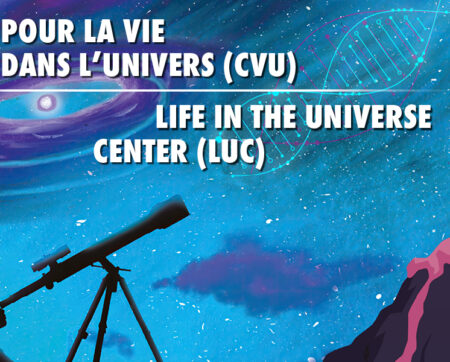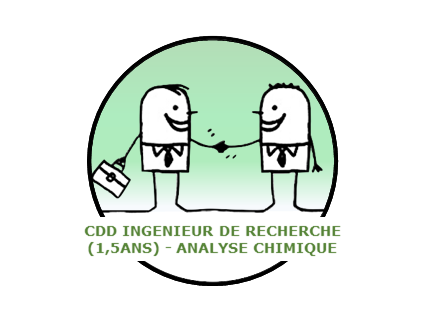Offre de thèse conjointe entre le LPC2E (Orléans, France) et l’université de Berlin (Allemagne).
Co-financement CNES-Région Centre Val de Loire ou Université de Berlin (financement à confirmer et qui dépend notamment du dossier du candidat).
Les candidatures sont à soumettre en ligne (site CNES) avant le 15 mars.
Mission
Planetary bodies with strong habitability potentials (i.e., whether life could originate or be sustained on such bodies) are the target of many space missions. Oceanic worlds in particular icy moons with subsurface oceans as Europa and Enceladus are prime targets of space agencies such as ESA and NASA for decades to come. Europa and Enceladus, respectively, orbiting Jupiter and Saturn, are of particular interest because hydrothermal activity is believed to occur on their rocky sea floors. Gas, dust, and ice grains from the liquid ocean of Enceladus are emitted from the surface through plumes, allowing a study of the Enceladus’ocean composition from space by in situ instruments. Hypervelocity impact ionisation mass spectrometer are able to sample emitted grains during spacecraft flybys as Cosmic Dust Analyser (CDA) onboard the NASA/Cassini spacecraft which have revealed a complex organic chemistry. Enceladus still arouses very strong enthusiasm from the community for detailed in situ exploration of the composition on the surface and near the surface coupled with mapping using an orbiter. Enceladus is one of the possible targets for the large L4 missions of the ESA, and of the latest NASA Decadal Survey 2023-2032 which particularly highlights the Flagship Orbilander mission or at least a flyby mission for the New Frontiers program.
Europa’s high albedo and limited number of craters indicate a geologically active world. Beneath the young ice crust, observations corroborate that Europa may host a global subsurface ocean in contact with a silicate mantle, providing a key physical interface allowing heat transfer and chemical exchanges between its deep ocean and the surface. The large salt deposits in the fracture zones could provide niches for bio-nutrients despite the intense radiative environment. In the next few years, NASA’s Europa-Clipper mission (launch ~ Oct. 2024) will embarks the last generation of impact ionisation mass spectrometer, the Surface Dust Analyzer (SUDA), an upgraded version of CDA, to scoop up the ejecta generated by a constant flux of micrometeorites blasting fragments of Europa’s surface into space, and identify their chemistry.
Laboratory experiments which reproduce impact ionisation mass spectra can help the interpretation of the CDA measurements and prepare for SUDA’s. The acceleration of μm-sized icy grains to hypervelocity is a challenge, and instead the laser-induced-liquid beam ion desorption (LILBID) technique is used with great success to reproduce mass spectra of such icy dust. A pulsed infrared laser ionises a μm-sized water beam by desorption. LILBID setups are usually coupled with time-of-flight (TOF) mass analyzers, with a limited mass resolution (∼800 m/Δm). However, even though about 20 times higher than CDA’s and about 3-5 times higher than SUDA’s, the mass resolution is still preventing an unambiguous mass peak identification.
The Fourier transform Orbitrap technology, which offers ultra-high mass resolutions (>100 000 m/Δm for acquisition times of 800 ms at m/z 100 with a D30 cell). In order to enhance the interpretation of SUDA’s future data, the coupling of an Orbitrap-based mass analyzer to LILBID technique has been investigated through a partnership of LPC2E, Universities of Berlin and Leipzig and J. Herovsky institute of Prague. The aim is to reproduce the mass spectra recorded by Cassini’s Cosmic Dust Analyzer (CDA) in the vicinity of Saturn’s icy moon Enceladus. A unique analytical setup that is able to simulate hypervelocity ice grains’ impact in the laboratory (at speeds in the range of 15−18 km/s) with an unprecedented high mass resolution of up to 150 000 m/Δm (at m/z 19 for a 500 ms signal duration) has been developed and optimized.
The objectives of the new PhD work is to pursue this effort as the ultimate objective is to be able to record impact ionisation analogue mass spectra both for positive and negative ion mode mimicking low to moderate impact velocities (3–15 km/s). The results will be implemented in the LILBID database, and will sustain the collaborative effort between LPC2E and Frei Univ. of Berlin, to build a library of high-resolution mass spectra of analogues of Europa dust and Icy grains that would be integrated a comprehensive database containing analogue data for SUDA and other on-board instruments for future ocean world missions.
During this work focus would be made on the reliable identifications of biosignatures such as amino acids, fatty acids, and peptides in water ice grains, and the impact of diverse salt on their detection limit. The PhD work may also include studies of hypervelocity dust generated by a dust accelerators coupled to this Orbitrap movable device in order to proof the concept of future Orbitrap-based impact ionisation dust analysers in space.
This PhD work will be jointly supervised by Christelle Briois (LPC2E, Orléans, France) and Frank Postberg (Frei Univ. of Berlin, Germany), both Co-I of NASA/SUDA instrument.
=================
For more Information about the topics and the co-financial partner (found by the lab !); contact Directeur de thèse – christelle.briois@cnrs-orleans.fr
Then, prepare a resume, a recent transcript and a reference letter from your M2 supervisor/ engineering school director and you will be ready to apply online before March 15th, 2024 Midnight Paris time !
Profile
Master’s degree in a science discipline, mainly chemistry and physics (Analytics, Environment, Planetology, Astronomy, Physical chemistry, Plasma physics). Knowledge in mass spectrometry and/or in subjects related to the study of Europa and/or Enceladus habitability, as also MatLab or Python or SimIon is highly desirable. Complementary formation in these subjects is foreseen during the doctoral studies.





Aucun commentaire sur l'article PhD Offer on Calibration of hypervelocity ice grain space detectors by orbitrap-HRMS